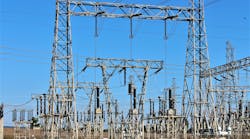The New York State Smart Grid Consortium has provided an update on grid advancements by energy stakeholders and academic institutions that are currently underway throughout the state. Following Hurricane Sandy, the NYSSGC has taken on several initiatives over the first half of 2013 to highlight the importance of investment into hardening the state’s energy infrastructure and deploying innovative smart grid technologies that will make New York’s energy system more robust, resilient and adaptable.
“As a collaboration of utilities, technology providers, policy makers and research institutions, the NYSSGC is committed to serving as both an advocate for smart grid initiatives and a resource to the public on grid modernization efforts in New York State,” said James T. Gallagher, Executive Director, New York State Smart Grid Consortium. “In support of priorities outlined by Governor Cuomo as part of the New York Energy Highway Blueprint, our members are working toward a coordinated smart grid effort that will create a more flexible, efficient, and resilient grid to fully support New York’s ambitious energy goals and ensure we are prepared for both future challenges and opportunities.”
As New York academic institutions and industry researchers currently work toward a smarter energy grid and educate the next generation of industry leaders, a few highlights of member-related activity during the first half of 2013 include the following:
- The Brookhaven National Lab/Stony Brook University Smarter Grid Research, Innovation, Development, Demonstration, Deployment Center (SGRID3) responded to Hurricane Sandy through an SGRID3-led collaboration to develop a comprehensive proposal for the use of dynamic microgrids to support greater resilience and faster recovery for Long Island Electric Grid. In addition, the academic institutions are also collaborating with Orange and Rockland Utilities and Central Hudson Gas and Electric on modeling and simulation as a key part of building a smarter grid vision to withstand extreme weather.
- Professor Lei Wu of Clarkson University received a $400,000 Faculty Early CareerDevelopment (CAREER) award for “Smart Grid” research by the National Science Foundation. Wu will embark on a five-year project to develop a nation-wide blueprint of electrical grid updates and develop algorithms to find favorable sites for and reduce the unpredictability of renewable energy facilities.
- Eight Con Edison researchers received the prestigious Technology Transfer Award from the Electric Power Research Institute (EPRI), a national energy research organization, for their work on projects to make the delivery of electricity safer and more affordable.
- New York Power Authority’s (NYPA) chief electrical engineer Bruce Fardanesh was elected by the Institute of Electrical and Electronics Engineers (IEEE) as an IEEE Fellow for his achievements in developing and integrating advanced technologies for enhanced operation and control of power systems as demonstrated on NYPA’s power grid. Five NYPA employees were also honored with the 2012 Technology Transfer Award from EPRI in recognition of their contributions involving electric power generation, power utilization and the environment.
“The progress so far this year illustrates the value of smart grid research and technologies to improve grid reliability, resilience and reduced electric power costs,” added Gallagher. “While the public envisions the smart grid as the domain of utility companies and regulatory agencies, there are also a considerable number of other stakeholders contributing to the advancement of grid modernization.”
Several NYSSGC members have also made significant progress in the implementation of smart grid pilot projects, as well as strategic investment in grid enhancements in the wake of Hurricane Sandy. Highlights of member-related activity during the first quarter of 2013 include the following:
- The New York Independent System Operator (NYISO) has installed 38 of 39 phasor measurement units (PMUs) at strategic locations throughout the state as part of a federal matching grant in the amount of $75 million it was awarded by the Department of Energy in 2010. The PMU network will improve grid operators’ ability to more quickly detect irregularities, predict problems and take corrective action to maintain reliability, and will eventually connect to other regional networks to provide grid operators with broader situational awareness of grid conditions throughout the eastern United States and Canada.
- To date, Consolidated Edison, Inc. has invested over $300 million to implement smart grid projects that include remote controlled switches and capacitors that improve the efficiency of the system
- National Grid successfully deployed 5,000 smart meters as part of its early field trial for the Smart Grid Pilot (now named Smart Energy Solutions Program), with an additional 10,000 customers in Spring 2013 through full meter deployment as approved by the Department of Public Utilities. The full pilot will commence in early 2014.

